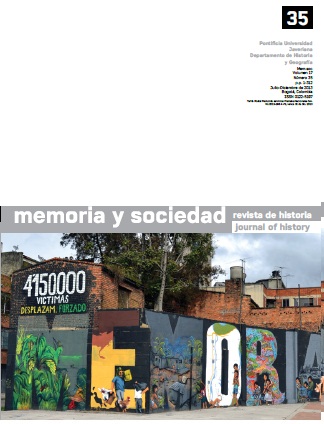Resumen
El artículo propone el análisis de la tipología de frente y de perfil desde el siglo xix hasta hoy. A partir de una reflexión sobre la imagen fotográfica y su relación con la verdad y la memoria, se realiza un recorrido en tres tiempos, considerando el informe oficial del llamado Viaje del Beagle y los grabados que lo ilustran (1826-1836), las fotografías tomadas a los miembros de los grupos indígenas patagónicos vencidos después de las campañas militares que se iniciaron en Argentina en 1879, y algunos casos de apropiación de la tipología por parte de artistas y activistas de derechos humanos en los últimos treinta años. Entre los grabados y las fotos se verificaría una tensión entre la concepción propia del romanticismo, en la que se contempla la transformación de los indios por medio de la educación civilizatoria, y una visión positivista que supone la objetivación de los cuerpos indígenas puestos bajo la indagación científica. Por su parte, los casos contemporáneos plantean un giro en la interpretación del papel de la representación en la construcción de una memoria histórica: el carácter póstumo de la fotografía convive con otra dimensión ligada a su capacidad de dar una renovada existencia a lo muerto y asegurarle una trascendencia que desafía cualquier tendencia al olvido.La revista Memoria y Sociedad se encuentra registrada bajo la licencia Creative Commons Reconocimiento 4.0 Internacional. Por lo tanto, esta obra se puede reproducir, distribuir y comunicar públicamente en formato digital, siempre que se reconozca el nombre de los autores y a la Pontificia Universidad Javeriana. Se permite citar, adaptar, transformar, autoarchivar, republicar y crear a partir del material, para cualquier finalidad (incluso comercial), siempre que se reconozca adecuadamente la autoría, se proporcione un enlace a la obra original y se indique si se han realizado cambios. La Pontificia Universidad Javeriana no retiene los derechos sobre las obras publicadas y los contenidos son responsabilidad exclusiva de los autores, quienes conservan sus derechos morales, intelectuales, de privacidad y publicidad.
El aval sobre la intervención de la obra (revisión, corrección de estilo, traducción, diagramación) y su posterior divulgación se otorga mediante una licencia de uso y no a través de una cesión de derechos, lo que representa que la revista y la Pontificia Universidad Javeriana se eximen de cualquier responsabilidad que se pueda derivar de una mala práctica ética por parte de los autores. En consecuencia de la protección brindada por la licencia de uso, la revista no se encuentra en la obligación de publicar retractaciones o modificar la información ya publicada, a no ser que la errata surja del proceso de gestión editorial. La publicación de contenidos en esta revista no representa regalías para los contribuyentes.


